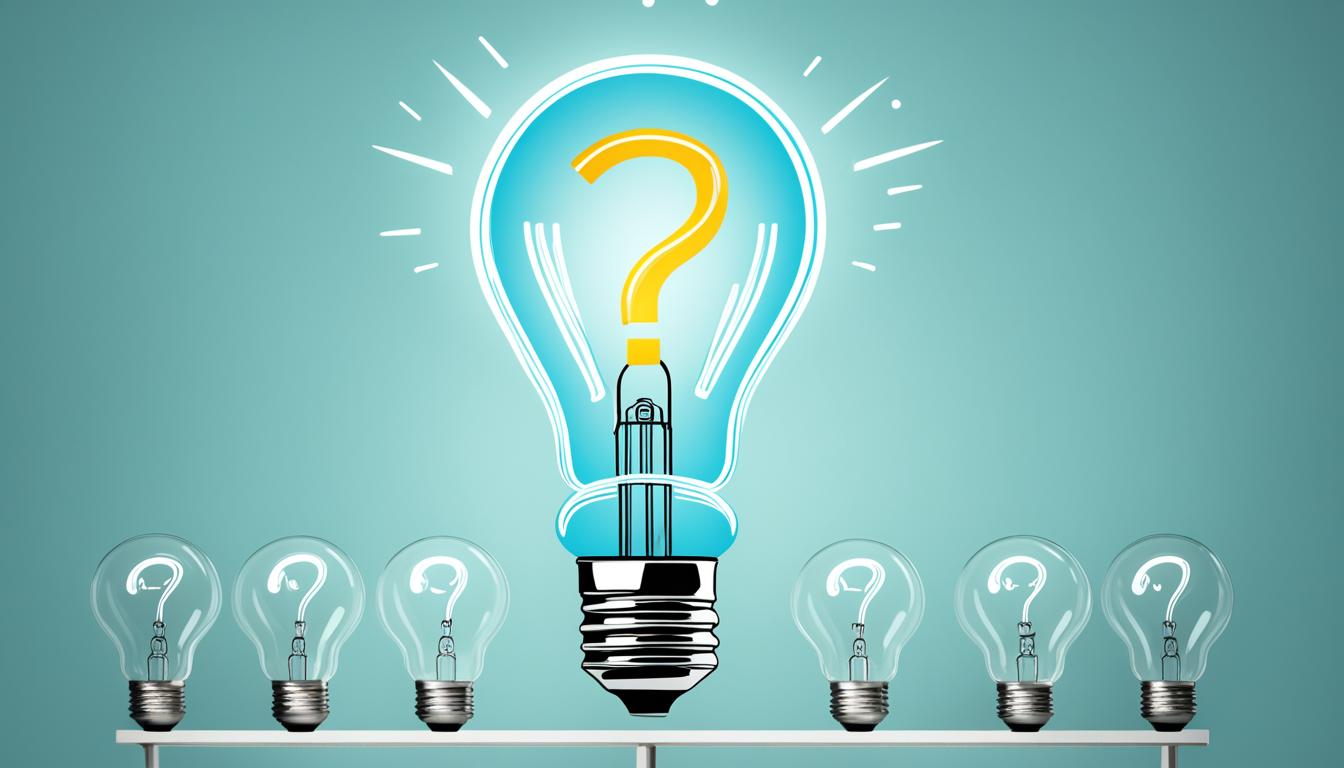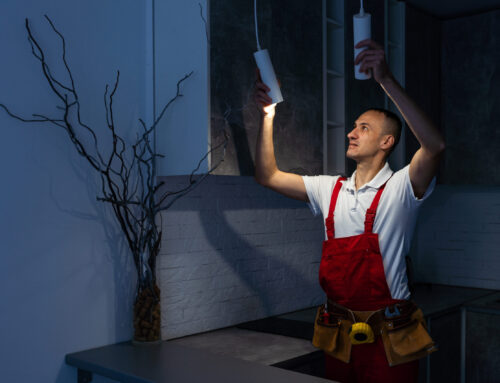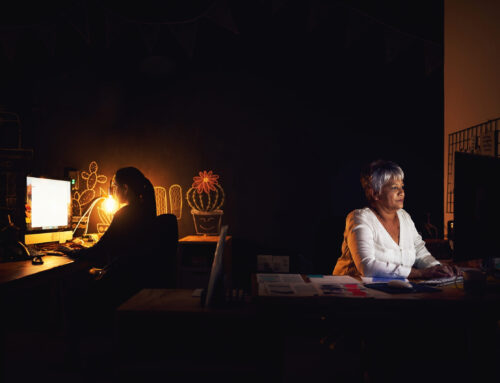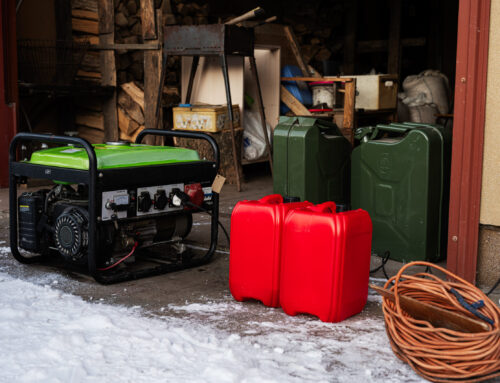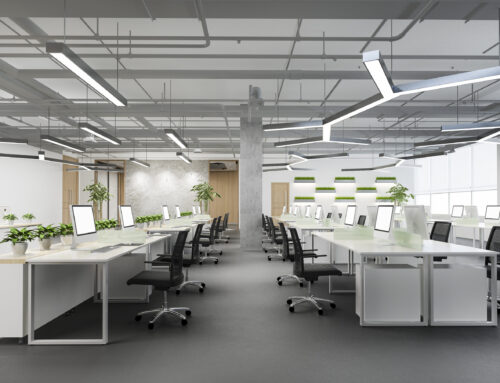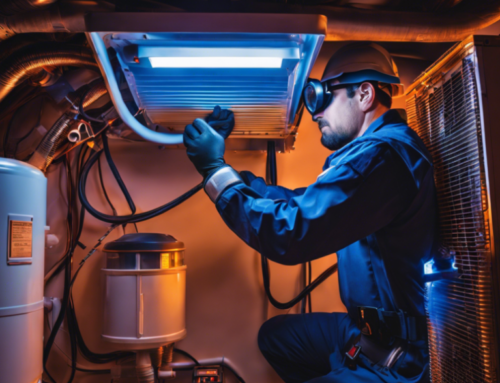Using fewer bulbs does indeed save electricity, especially when you switch to energy-efficient options. Energy-efficient light bulbs, which utilize advanced technology and durable materials, can significantly reduce electric bills, potentially cutting costs by half. This raises the point: Does using less bulbs save electricity?
Many homeowners ponder this as they consider ways to conserve energy. Unfortunately, misconceptions about how light bulbs consume energy can lead to suboptimal decisions.
This article aims to clarify these misunderstandings and equip you with the knowledge to make informed choices for your home’s lighting needs.
Key Takeaways
- Energy-efficient light bulbs can significantly reduce electric bills.
- LED bulbs consume up to 80% less energy than traditional bulbs.
- Using the right light bulbs can optimize electricity conservation methods.
- Turning off lights, in general, saves more energy than leaving them on.
- Understanding electricity consumption can help make informed energy-saving decisions.
Understanding Electricity Consumption and Bulbs
Learning how different light bulbs affect electricity use is key to saving energy. By knowing the details, you can plan better ways to save energy and cut down on bills.
How Electricity Consumption is Measured
Electricity use is measured in kilowatt-hours (kWh). This means the energy needed to power a 1,000-watt device for an hour. Light bulbs use different watts, affecting how much energy they use. For example, incandescent bulbs waste a lot of energy as heat, not light. LEDs, however, use less energy and last much longer.
The Role of Light Bulbs in Electricity Consumption
Light bulbs are a big part of your energy use at home. Each type, like incandescent, CFL, and LED, affects energy use and costs differently. Switching to an LED can save you about $81.68 over its life. LEDs also last much longer than incandescent bulbs, which helps save more energy.
Here’s a look at how different bulbs compare:
| Type of Bulb | Lifespan (hours) | Energy Use (Watts) | Cost Over 25,000 Hours ($) |
|---|---|---|---|
| LED | 25,000 | 40-80 lumens/watt | $30 |
| CFL | 8,000 | Double the watts of LED | $60 |
| Incandescent | 750 | 90% energy as heat | $169 |
Using smart controls like sensors and timers can also save energy. These tools make sure lights turn off when not in use. Choosing the right bulbs and using smart tips can greatly reduce energy use and bills.
Does Using Less Bulbs Save Electricity?
Many think that using fewer light bulbs cuts down on electricity bills and saves energy. But, the bulb type and how it’s used matter a lot for energy efficiency. Let’s look into this myth.
Traditional incandescent bulbs are not good at saving energy. The U.S. Department of Energy says they turn about 90% of their energy into heat and only 10% into light. This means they use a lot of energy but don’t give much light.
On the other hand, bulbs like LEDs and CFLs use less heat and make more light. LEDs are up to 90% more efficient than incandescent bulbs. They also don’t care how often you turn them on or off, making them great for saving energy.
To show you this, let’s look at some numbers:
| Bulb Type | Usage Time Per Day | Energy Cost (annually) |
|---|---|---|
| 60W Incandescent | 2 hours | $4.80 |
| 12W LED | 2 hours | $1.00 |
Using a 12W LED instead of a 60W incandescent bulb saves a lot of energy. For an average American home with 45 bulbs, this means big savings. The cost for lighting with old bulbs can be about $216 a year. But with energy-efficient bulbs, it’s around $45, saving about $171 a year.
Don’t forget about dimmers, timers, and motion detectors. They help use energy better. Incandescent bulbs don’t work well when dimmed, but CFLs and LEDs do. They save more energy and last longer when dimmed right.
In conclusion, it’s not just about using fewer bulbs. Choosing energy-efficient bulbs and smart controls can really help lower your bills and use less energy. Switching to LEDs or CFLs and using controls is a smart move for your home’s energy use.
Energy-Efficient Lighting Solutions in Boca Raton
As the world shifts towards more sustainable energy practices, Boca Raton and the broader Florida region are stepping up with energy-efficient lighting solutions for both homes and businesses. These advanced lighting options not only reduce your energy bills but also support environmental conservation.
The Benefits of LED Bulbs
LED bulbs stand out for their impressive energy efficiency and longevity. By integrating LED technology, residents and businesses in Boca Raton can drastically reduce their energy consumption. This translates to significant savings on electricity bills—imagine slashing your annual energy costs while living in Florida’s sunny climate.
Moreover, LED bulbs can last up to 25,000 hours, minimizing the frequency of replacements and further reducing long-term expenses. This durability is especially valuable in the Florida market, where efficient lighting solutions can also contribute to lower air conditioning costs due to their minimal heat output.
Embracing LED lighting in Boca Raton not only promises substantial financial savings but also environmental benefits. If every household in the area switched to LED bulbs, the reduction in carbon dioxide emissions could be monumental. Plus, the decreased heat production from LEDs enhances safety and comfort, particularly during Florida’s warmer months.
Choosing the Right Bulbs
When picking energy-efficient lighting, it’s important to know about different bulb types and energy ratings. LEDs and CFLs are great because they save a lot of energy and last a long time. CFLs use 70-80% less electricity than old bulbs and last about 10 times longer.
Choose the right color temperature for your space. ‘Soft white’ or ‘warm white’ bulbs are good for living areas, while ‘cool white’ or ‘pure white’ are better for offices.
Make sure the bulbs you choose work with your dimmers, as not all LEDs do. The upfront cost might be more, but you’ll save on energy and maintenance costs over time. By 2035, most lighting in the US is expected to be LED, which could save up to 569 TWh of energy a year.
Common Myths About Light Bulbs and Energy Savings
It’s key to know how different light bulbs work to pick eco-friendly options. Many think incandescent and halogen bulbs are better, but they’re not. Let’s clear up these myths to help you choose wisely for saving energy.
Myth: Incandescent Bulbs are Better Than LEDs
Many think incandescent bulbs beat LEDs, but that’s not true. Today’s incandescent bulbs use less energy, but LEDs are way more efficient. Switching a 100W incandescent for an ENERGY STAR LED can cut your energy bill by about $6 a year.
Also, LEDs last 25 times longer and use 75%-80% less energy than traditional bulbs. This makes LEDs a much better and greener choice.
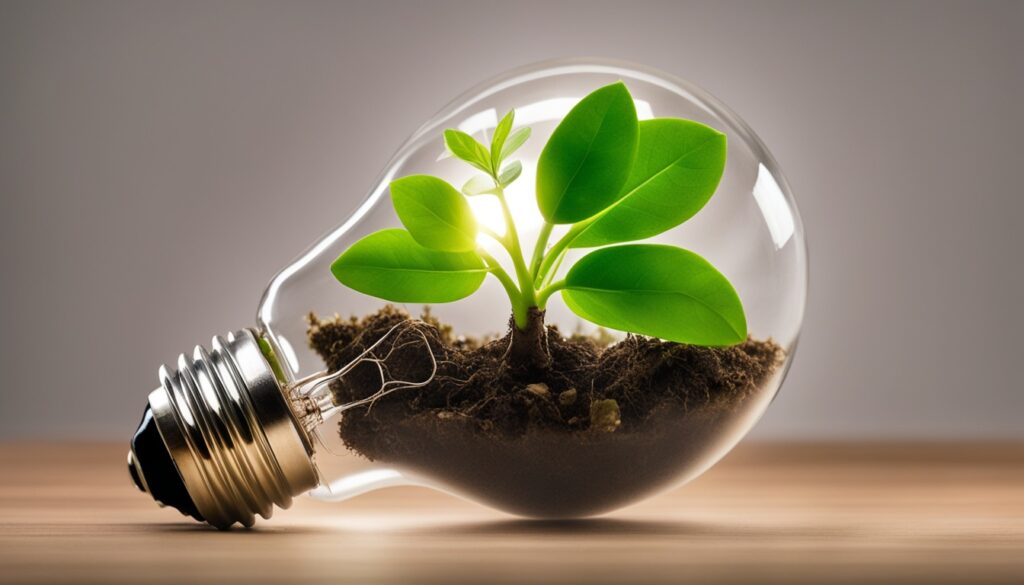
Myth: Halogen Bulbs are the Best Choice
Some believe halogen bulbs are the top pick. But they’re not as good as LEDs and CFLs. LEDs use less energy and last much longer than halogen bulbs.
The cost of LEDs, around $5 to $6 each, is worth it because they save money and energy. Halogen bulbs don’t save as much energy or last as long, making LEDs the better choice for saving energy.
By understanding these myths, you can make smarter choices. These choices help save energy and protect the environment.
Reducing Electricity Consumption: Effective Strategies
Conserving electricity at home is more than just turning off lights. Using different strategies can cut down your energy bills and help the environment.
Using energy-efficient lighting is a key way to save energy. LED bulbs use 90 percent less energy than old bulbs. Using these lights right helps save even more energy.
Reducing standby energy use is another good strategy. Standby energy uses 5 to 10 percent of home energy, costing about $100 a year for the average U.S. home. Using smart power strips can cut down on “vampire loads” from devices that use power when off.
Choosing Energy Star appliances can also save a lot. For example, Energy Star water heaters can save a four-person household up to $550 a year on bills. Energy Star clothes washers use 20 percent less energy, and refrigerators use 9 percent less than standard ones.
Good insulation helps save electricity too. Windows can lose 25 to 30 percent of heating and cooling energy. Low-e storm windows can cut heat loss by 10 to 30 percent. Sealing your home well can lower heating and cooling costs by up to 20 percent.
Smart thermostats can save about 8 percent on heating and cooling bills. Their savings depend on your climate and HVAC quality. Sealing air leaks with caulk and weather stripping can also cut heating and cooling costs, often paying back in a year.
Looking at how you use electricity can also find ways to save. Smart meters and energy management systems help use energy better. Time-based rates are great for homes with plug-in hybrids and electric cars, charging at night is cheaper.
Using these tips and strategies can greatly reduce your electricity use. This leads to lower bills and a smaller carbon footprint.
Conclusion
Looking into light bulbs and their effect on electricity use shows that LEDs are key in cutting down on power use. LEDs use about 70% less energy than old incandescent bulbs and turn 70% of their energy into light. This makes your electric bills lower and helps the planet by reducing emissions.
Switching to energy-saving lighting brings big savings and long-term gains. LED bulbs last up to 25,000 hours, which means fewer replacements and lower upkeep costs. For example, the 5000 Lumen LED Bulb by Phillips and the SANSI 40W LED Light Bulb are great for bright, energy-saving lighting in many places.
Choosing the right, energy-saving light bulbs is key to using less electricity. As more people use LEDs at home and in businesses, we could save a lot of money and help the environment. Using LEDs could save about US$4.47 trillion over their lifetime and cut carbon dioxide emissions by 14.45 gigatons.
By picking LEDs, you help make a better future and save money over time. Adopt these energy-efficient bulbs to help your wallet and the planet.
How Boca Electrical Works Can Help You
Ready to slash your energy bills and enhance your space with eco-friendly solutions? At Boca Electrical Works, we specialize in installing energy-efficient LED lighting that can save you up to 85% on your current lighting costs. With a lifespan of up to 50,000 hours, these LEDs are not just a lighting solution—they’re a smart investment for both homeowners and businesses.
But the benefits don’t stop there. Transitioning to LED lighting means your air conditioning costs could drop by 5-15% thanks to their lower heat output. Plus, our expert team doesn’t just install; we maintain and repair your lighting to ensure peak performance and prolonged lifespan.
Located in Boca Raton? Let us help you make the switch to a brighter, greener future. Contact Boca Electrical Works today for a consultation and discover the eco-friendly lighting options that fit your needs, complete with upfront pricing. Join us in making a sustainable difference—one light at a time.


